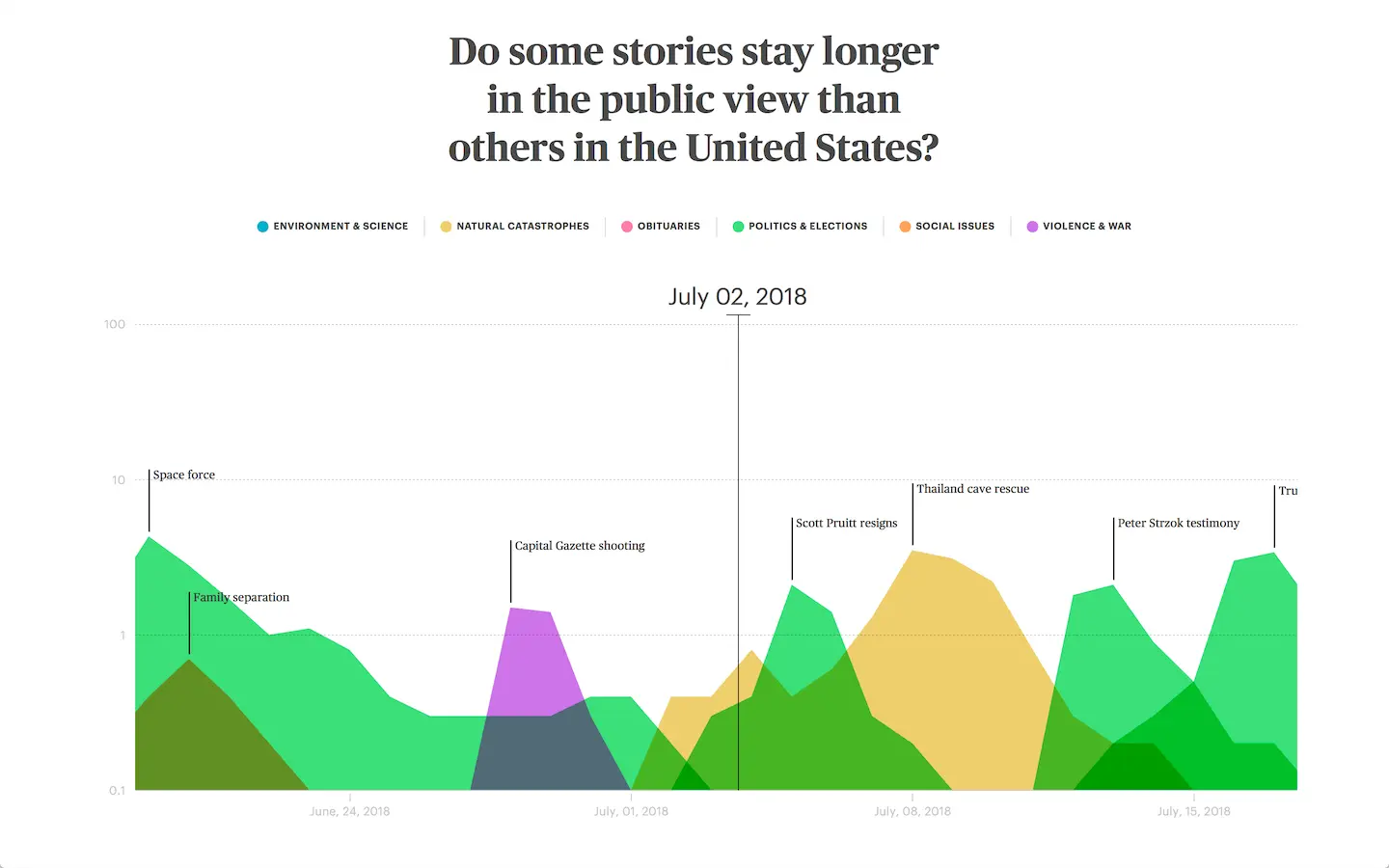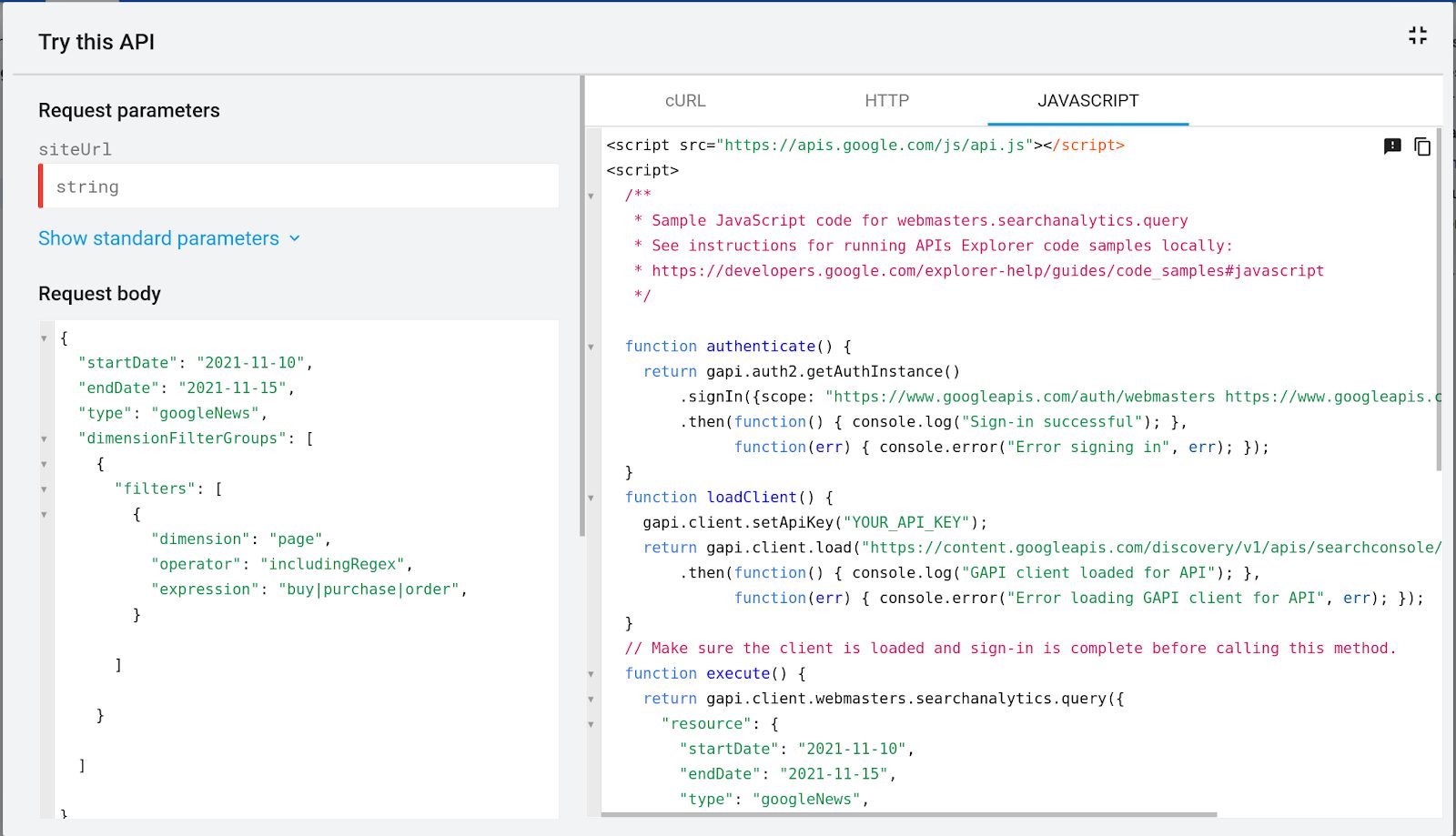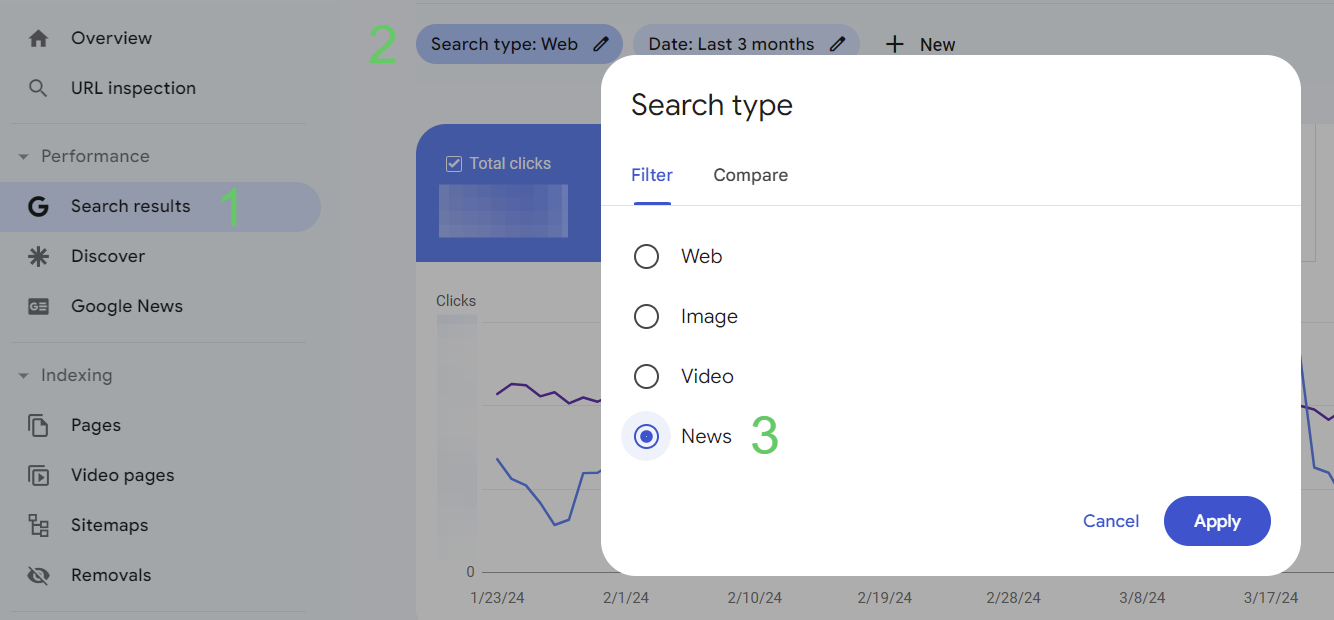Maximizing News Visibility on Google: SEO & Tracking with APIs
The digital age continues to reshape the journalistic landscape: ink-stained pages have given way to pixelated screens, and readers flock to digital platforms for their daily dose of news. In this dynamic environment, the survival of media depends on more than just quality content creation. They must also excel at news SEO to win the necessary share of online visibility.
In this article, we’ll dive into unique aspects of SEO for news websites, explore what strategies and solutions maximize efficiency, and learn how to track progress.
Contents
Key specifics of news SEO on Google
How to optimize for Google’s News surfaces and track progress?
Google Top Stories Feature: optimization and rank tracking
SEO best practices and reporting for Google Discover
Strategies and assessment for Google News
SEO tips and reporting for the News Tab of Google Search
Conclusion
Key specifics of news SEO on Google
Mastering the art and science of search engine optimization (SEO) is essential for businesses, publishers, and content creators alike. For any industry, improved search rankings translate to increased organic traffic and higher revenue from more sales, on-site advertising, or other business activities. However, there are distinct factors shaping SEO specifics for news publishing websites. Let’s explore the key points below.
Timing. Generally, SEO is a long-term game, where businesses look to improve their rankings and traffic over months or even years. This is achieved by producing evergreen content and targeting non-timely topics. News websites, on the other hand, need to bring the latest developments and most recent information to the spotlight at the right moment, which means almost instantly.
Traffic potential. Take a look at the graph below illustrating The Lifespan of News Stories of 2018 in the United States. As you can see, news articles come and go, and even though some stories may get a larger attention span, they still have a very limited time to achieve their traffic potential.
Keyword dynamics. To make sure an article gets the needed exposure, publishers target trending and highly competitive topics and keywords that may have short lifespans but high search interest at a specific time. Consider the graph from DataForSEO Trends below showcasing interest in the “dubai airport” keyword over the last 30 days. There’s a clear spike, and it doesn’t last long. That’s a typical news-related keyword. We’ll explain why shortly.
In contrast, the majority of other industries target long-tail keywords with relatively high search volume and low competition aiming to produce content that retains relevance over an extended period of time.
Placement. SEO is mostly about targeting regular Google search results. At the same time, news SEO is mainly focused on optimizing for particular SERP features, such as Featured Snippets, Videos, and, most importantly, the Top Stories carousel. Besides that, publishers go after rankings on Google News, Google Discover, and the News Tab of Google Web Search.
SEO implementation. As we’ve already established, news stories need to appear in the right place at the right time. This means that, unlike most other industries, digital media doesn’t have the luxury of time to tweak and refine content or fix mistakes after publication. Google’s initial indexing largely determines whether an article shows up in Top Stories, so every news piece has to be perfectly optimized once it gets out to the world.
This brings us to an important question – how to optimize for all places where news can appear on Google?
How to optimize for Google’s News surfaces and track progress?
In a study comparing the traffic impact of major Google news surfaces, Newzdash found that on average 62% of organic traffic to publishers’ websites comes from Top Stories, with 34% coming from Discover, 3% from Google News, and less than 1% from the News Tab of Search.
Diverse in their traffic potential, all of these Google news surfaces also present distinct optimization challenges and require unique approaches. In this part, we will explore the key differences, requirements, and best practices, and will provide insights on tracking progress for the surfaces where news stories can appear on Google:
Google Top Stories: optimization and rank tracking with API
The Top Stories feature (also referred to as the News Box) is a part of Google search results pages (SERPs). It’s triggered by queries that include a news-heavy topic and is displayed as a carousel both on mobile and desktop, usually on the top of the SERP above all other results.
Unlike Google News and Discover, the Top Stories feature (and the News Tab to which its “More” button leads) are not personalized: “Everyone within a particular country sees the same results,” says Google.
Eligibility
Any article can be included in Top Stories if it complies with the Google News content policies. Since the Page Experience update went live, Google dropped its requirement for AMP to be included in Top Stories on mobile. Instead, Google now considers Core Web Vitals with other page experience metrics, including mobile-friendliness, HTTPS security, and intrusive interstitial guidelines, when ranking content in this section.
Apart from these general and technical guidelines, there isn’t much information from Google on optimizing for Top Stories, so let’s consider a few opinions and recommendations from SEO experts.
Best practices in expert opinion
Richard Nazarewicz, a former Technical SEO Manager of the Wall Street Journal and current BBC SEO & Discovery Lead, says:
“The Top Stories carousel for Mobile and Desktop SERPS is the most coveted spot for fresh or breaking news to surface within the Google Search ecosystem. Every newsroom is working hard with their SEO Editors or SEO desk, if they have one, to optimize using Google Trends, competitor analysis, and A/B testing SEO title tags (headlines) to ensure their article is surfacing in the top 3 Top Stories results. Just like any regular article they need to be linked to from a prominent position like the Homepage and included in a dedicated sitemap for fresh or breaking news from 48 >= 72 hours before being moved into a regular article archive sitemap depending on your setup.”
Lily Ray, Vice President of SEO & Research at Amsive Digital marketing agency, says that to win a Top Stories placement, “one of the most important ranking factors is the use of keywords in headlines.” She also recommends keeping your headlines under 22 words and mentions another important point:
“Unlike Google’s standard organic blue links, which display the <title> element as the title of the ranking page, Top Stories show the <h1> headline as the primary title of the page. It’s therefore important to focus on optimizing the article headline, such as by ensuring the name of the targeted entity (person, place, or thing being written about) is stated clearly and early in the headline.”
To find the best-fitting popular keywords to include in your headlines, you can use DataForSEO’s versatile solutions for keyword research, including Google Ads, Google Trends and DataForSEO Trends APIs from the Keyword Data API suite. You will also find powerful Google keyword research endpoints in DataForSEO Labs API. Besides that, with On-Page API, publishers can easily audit their <h1> headlines at scale, generate on-demand reports on Core Web Vitals performance, and do site-wide and per-page SEO health check-ups.
Reporting
A significant challenge in the Top Stories optimization is that Google Search Console and Analytics do not offer reports tailored for tracking performance metrics related to this feature. However, publishers can consider alternative solutions, like DataForSEO’s Google SERP API, that can help to keep track of your rank in the Top Stories feature.
Using the Advanced function of Google SERP API, you can obtain a complete overview of regular results and all SERP Features for your target keyword, including Top Stories carousels, Featured Snippets, Perspectives, and more. With a rapid turnaround time of up to 6 seconds for Live-mode tasks, this solution allows publishers to monitor their search performance in near real-time.
SEO best practices and reporting for Google Discover
Google Discover is part of Google Search that offers a personalized feed with article recommendations on the google.com homepage based on user web and app activity. For now, it is only available on mobiles and tablets in the Google app. However, in 2023, Google’s been testing around the Dicsover feed on desktop so it may roll out on this device type in the future.
Eligibility
Any website indexed by Google and meeting Discover’s content policies is automatically eligible to appear in Google Discover. No special tags or structured data are required.
Best practices
To increase the likelihood of your content appearing in Discover, Google offers a list of best practices for site owners in this article.
The recommendations boil down to:
➤ Using relevant images at least 1200 px wide and enabled by the max-image-preview:large setting, or by using AMP.
➤ Creating informative, helpful, and reliable content while avoiding clickbait tactics.
➤ Providing clear metadata, including publication dates, bylines, author and publisher information, and contact details.
To conduct comprehensive analytics of metadata and vital on-page SEO metrics at scale, media outlets can leverage actionable insights from DataForSEO’s On-Page API.
Reporting
To gain insight into article performance on this news surface, publishers can use a Performance report for Discover in Google Search Console.
It’s also possible to collect this data with Search Analytics API by setting the "type" to "discover".
Strategies and assessment for Google News
Google News is a dedicated platform with news aggregated from multiple sources. It provides a personalized content experience based on user preferences and interests. Users can access the platform at news.google.com via mobile or desktop and using a mobile app. Note that Google News is a stand-alone platform, different from the News Tab, which is a part of Google Search.
Eligibility
While any website has the potential to appear on Google News, there are specific principles to follow.
First off, there’s a list of technical requirements for inclusion in Google News, such as using NewsArticle structured data and News XML Sitemaps. Using Publisher Center is not a requirement, but it offers multiple benefits for publishers and allows you to control important information about their brand.
It’s worth noting that the news is considered a Your Money or Your Life (YMYL) topic according to Google’s content quality evaluation guidelines (a handbook used by real people to evaluate the quality of algorithmically generated results).
The Page Quality rating standards for YMYL pages are very high. So, publications must demonstrate very good E-E-A-T: Experience, Expertise, Authoritativeness, and Trust. You can find more information about E-E-A-T on page 26 of the quality evaluation guidelines.
Ranking factors and best practices
Ranking in Google News is determined algorithmically by these factors:
➤ Relevance of content
➤ Prominence
➤ Authoritativeness
➤ Freshness
➤ Location and language.
Ranking in the “For you” tab also relies on additional factors such as:
➤ Usability
➤ User interests
➤ User preferences for topics or publishers.
Learn more about the signals behind each factor.
In line with this, there are several key points to consider for optimal performance:
➤ Produce helpful, reliable, and high-quality content
➤ Make sure you have the SEO basics right.
➤ Follow Google’s best practices for news websites and guidelines listed here.
➤ Prioritize unique perspectives by focusing on original, in-depth reporting, and investigative journalism, and offer readers diverse viewpoints.
➤ Publish breaking news events quickly while maintaining accuracy and quality.
➤ Prevent syndicated content from being indexed.
To maximize the effectiveness of optimization efforts, publishers can use solutions like DataForSEO’s On-Page API, a customizable crawling engine designed for comprehensive technical SEO audits. Additionally, functions like Text Summary with its readability analysis data and Check Grammar with quick correction suggestions, both available in Content Generation API, can help to streamline the editorial and proofreading processes.
Reporting
Publishers can track progress and traffic from Google News in Google Analytics (as referral source news.google.com) and in Search Console (in a dedicated Performance report for Google News).
The stats are also available via the Search Analytics API. Note that when you specify "type": "googleNews" in Search Analytics API, the data won’t include results from the News Tab, which is a different product in Google’s ecosystem.
In DataForSEO’s SERP API, we do not provide search results from the Google News platform yet. However, you can use our API to obtain data from the News Tab of Google Search.
SEO tips and reporting for the News Tab of Google Search
The News Tab of Google Search is an extended version of the Top Stories feature. When users click “More news” on Top Stories, Google takes them to the News section where it displays all relevant news stories.
It’s also possible, however, to get to these results when there’s no Top Stories feature by clicking on the News search filter.
Eligibility
Publishers are automatically considered for Top Stories or the News Tab of Search. According to Google, “they just need to produce high-quality content and comply with Google News content policies.”
Best practices
Given the News Tab and the Top Stories feature are close relatives, the best practices we’ve outlined earlier also apply here. These encompass otimizing Core Web Vitals and other page experience metrics, incorporating keywords with targeted entity into headlines and using a dedicated sitemap for fresh or breaking news.
Reporting
Unlike the Top Stories feature, monitoring performance from the News Tab is possible through Google Search Console. To collect this data with Search Analytics API, use "type": "news".
For more in-depth and rapid monitoring, publishers can also use DataForSEO’s Google News SERP API, returning results ranked in the News Tab of Google vertical search. Unlike Search Console, where “collected data should be available in 2-3 days”, Google News SERP API collects actual up-to-date search results. Once you make an API call, the API will bring you SERP data in under 6 seconds with the Live mode.
Conclusion
In summary, quality optimization of media websites requires understanding the nuances of news SEO. Key specifics include the importance of publishing timely content, using trending keywords, and getting an article’s SEO right the first time to maximize traffic potential within a short attention timespan. Also, unlike most other industries, publishers target specific surfaces where Google displays news: Top Stories, Google News, Google Discover, and the News Tab of Google Search.
While Google’s news surfaces offer different traffic opportunities and have unique characteristics, they share a few common requirements for success. These include producing high-quality content, mastering technical optimization, prioritizing user experience, and upholding E-E-A-T principles.
At DataForSEO, we understand the unique optimization challenges faced by media and news websites. To help publishers enhance the efficiency of their SEO efforts, we offer a range of easy-to-use scalable APIs tailored to specific optimization aspects:
- On-Page API for comprehensive technical SEO audits
- Content Generation API for streamlined editorial and proofreading process
- DataForSEO Labs API and the Keyword Data API suite for keyword research
- Google SERP API for rank tracking in Top Stories and the News Tab of Google Search.
Ready to optimize your media website for success? Try our APIs today!










